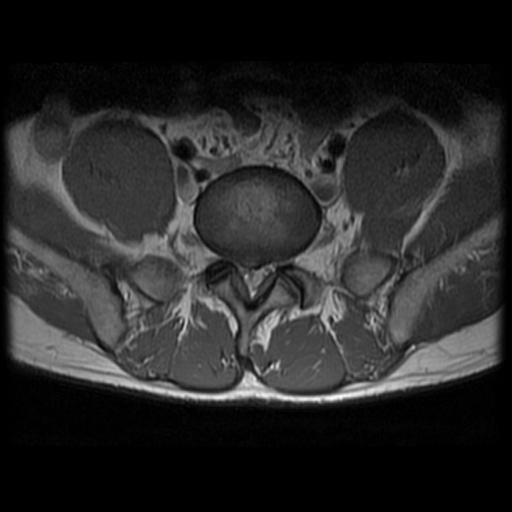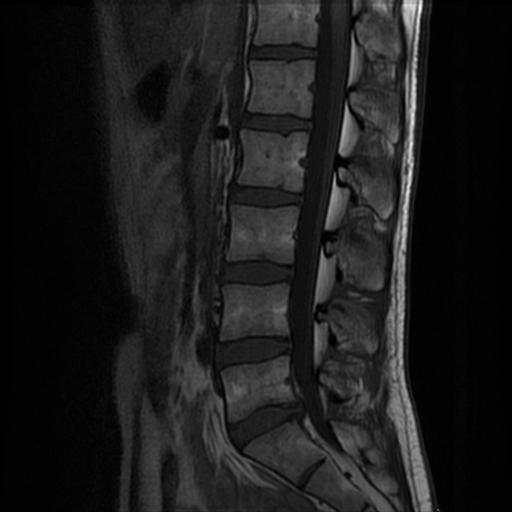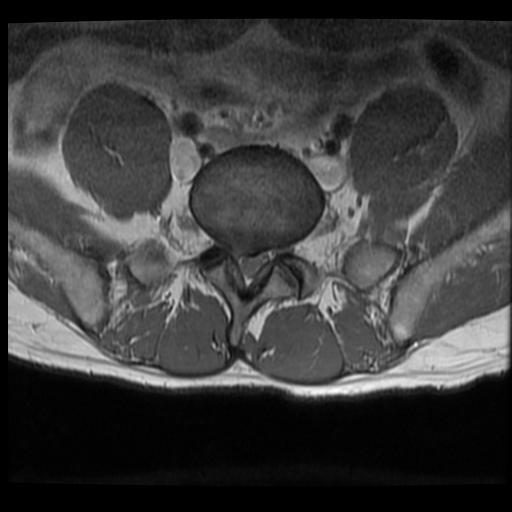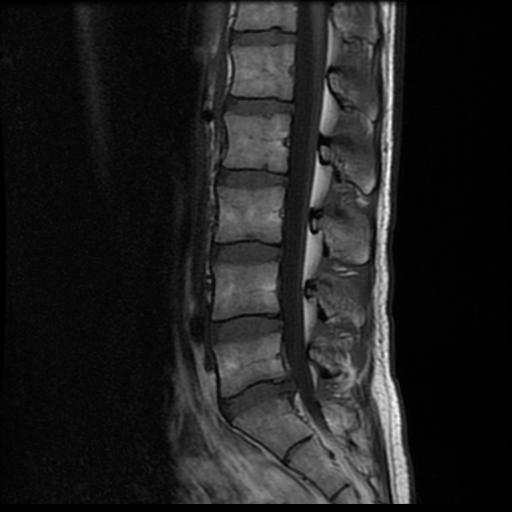I started to have back and leg pain in 2003. In the worst days, I couldn't walk for five minutes; I couldn't fall asleep at night. The pain was unbearable for me. I almost did back surgery, but its side effect and successful rate pulled me back. My practice on the conservative methods I learned from China magically relieved the pain. Now, I have been pain free for several years. I can do almost all activities before I had the leg pain. The pain seems to be a distant past, but I'd like to record it down to remind me the hardship I had gone through. In addition, I hope it can encourage you to fight over the back and leg pain caused by disc herniation.
2003: I first had severe leg pain after a day's walk and a 30 minute sprint, which led me to see a doctor. At that time, I hadn't even heard of the terms "bulging disc", "herniated disc". So, even after I was diagnosed to have a bulging L5-S1 disc, I didn't pay much attention. The pain didn't affect my daily life, so I only started the typical conservative treatment: physical therapy. And I gave up quickly after sometime, because the exercise was boring. Of course it didn't work. Readers, if you have early symptoms of a bulging disc or herniated disc, take it seriously and start the treatment early. I had gone through the pain, and I hope you do not!
2004: My leg problem gradually, gradually became worse . The trend was very very slow. I only felt the pain after a whole day's intensive walking in the very beginning. Then the time of walk to start feeling the pain gradually reduced to several hours, then reduced to a couple of hours.... After the first pain, I had to be seated for a couple of minutes to regain the energy to continue walking. One day, I suddenly noticed that I spent more and more time resting, and the distance between two rests became shorter and shorter.
2005: I started more systematic treatment. I got my Ph.D and started working. The insurance was better so I could treat it more consistently. At that time, I had my second MRI exam. The bulging L5-S1 disc was very obvious. At that time, I learned the three steps in treating the leg pain: the conservative treatment of physical therapy and orally taking anti-inflammatory pills, the more aggressive treatment of epidural steroid injection by injecting pain inhibitors directly to the area around the disc, and the last resort of surgery, usually by fusing two vertebral bones. However, at that time, I wasn't even informed by the doctors the treatment of microdiscectomy, or any discectomy at all. I only learned about that method years later in China. This significantly weakened my trust on the doctors: were they capable? Readers, never take the doctors' words as is. Always do your homework and research elsewhere. The internet is an amazing tool to give you all kinds of useful information. I worked on physical therapy again. A few exercises helped to relieve the symptoms, but only to some extent. The traction really helped, but I could only have it twice a week, 15 minutes each time, which was too short too few. I also started acupuncture, which was very good relaxing my back and leg. However, it was only a temporary relief. I felt much better immediately after it, but only lasted a day or so. Then the pain came back to me.


2006: I had my first epidural steroid injection in Feburary. I used to only feel sharp pain in the leg, but after the injection, the sharp leg pain became really dull. I also sensed moderate pressure at the injection point for several weeks. Then the symptom got controlled. I started to feel leg pain after half an hour's continuous walking, then I had to take a break every five minutes. It was not ideal, but still manageable. Surprisingly, in July, the pain went away from me just like magic. No kidding, I felt no pain at all even after a whole day's intensive hiking! Wow.. I was so happy at that time because I could live like a normal person once more! What I didn't aware was that it was just a short break in my fight against leg pain. The pain came back in March of 2007. Readers, you can learn from my experience. Even after the pain goes away, you still need to prevent it from coming back.
2007: The pain came back, much more overwhelming than before. In March, I had a two-hour hiking. Close to its end, I started to feel some needle pinch pain at the back, probably right around the L5-S1 disc. The pain was initially only in the back, but quickly spread to the leg. The old days came back to me. I started to feel the pain after less than half an hour's walk, pretty similar to the old days. I consulted several chiropractors, but I heard conflicting information from different people and their stunning charge hesitated me. After all, my pain wasn't that unbearable. Oh well, it remained at that level for the most of the year, till November.
2007 Nov: The darkest days. After a day of rain, I suddenly found that I could not get up from bed. The pain level elevated quite a bit, and it was always there. I constantly felt the pain no matter what I did: walking, standing, sitting. Only lying in bed made me feel better. It was not a surprise since the pressure on the disc was the least when lying down. I took my third MRI and I heard the bad news. My bulging L5-S1 disc became a herniated disc. The deterioration of the condition of the disc and the inflammation caused by the rainy days caused much of the pain. That was the most painful days in my life. The constant pain distracted my attention, made me unable to focus on other things. I couldn't even walk for 200 feet continuously. I even woke up suddenly in the middle of the night because of the pain. What was the fun of life if I always carried the pain? I asked myself. But when I consulted the doctors, I was only given the three options, physical therapy, steroid injection, and fusion. Again I wasn't told about microdiscectomy. The hospital is Kaiser Permanente, if you care. I almost settled on fusion, but I concerned about the skill of the doctors. Thus, I made the decision to give the conservative treatment a last shot, but I would try it in China, the country I was born. I bought an air ticket and flew back around Christmas time. (Check my evaluation of surgery and conservative treatment)


2008 in China: A different treatment philosophy. I consulted many doctors in China, surgeons, spine specialists, etc. Most of them advised me NOT to do surgery. Surprisingly, even surgeons told me so. My family personally knows those doctors so they told me the "truth". The doctors wanted the patients to do surgery, because their compensations depended on it. However, most of those patients who were talked to do surgery could be healed using conservative methods. The side effects of a surgery were also severe. It might delay the pain for sometime, maybe a couple of years or maybe more. But what would happen after that? It changed the natural physical structure of a human body, which was never good. they also told me the method of "microdiscectomy", which was less invasive than the big hammer "fusion". And they were surprised that my doctors in US didn't even mention it, because they learned the skills from US doctors precisely.
I also consulted many patients. All patients except one who did spine surgery regretted it, either because the surgeries weren't successful, or the pain came back after a few years, or some other problems rose up due to the surgery. The only patient highly recommended spine fusion because he had the same surgery 30 years ago and still had no pain at all. All patients who didn't do surgery recovered by purely using conventional methods. A lot of them had much worse symptoms than me, and yet they recovered.
Heard many personal stories, I further strengthened my mind to be patient, to fight a prolonged battle against back pain. Thus, I started to practice the conservative treatment the Chinese way. One important precaution that isn't mentioned by the US doctors is to keep the back warm. (check my suggestions on keeping spine warm) The reason is quite simple, cold will irritate the injury spot (bulging or herniated disc), and irritation will make it inflammatory and become bigger, which extends more and irritates the nerve. Since then, I always wear a soft lumbar back brace that does not have support functionality. And I can seriously tell you that I do feel the difference. Many Chinese patients and doctors believe that all back and leg pain caused by bulging or herniated disc problem could be cured by simply lying in bed with nothing else. Many of them lied in bed for a month or even three months before the pain went away. The philosophy is quite simple. lying horizontally is the position to put the least pressure on the discs. Keep it in that position and let the body heal itself. Well, I know doctors in US would definitely say no-no, but I have also heard many personal successful stories, who should I believe? (Check my analysis on lying flat) Another major difference between US and Chinese doctors is their view on "traction". In US, traction is only provided as a supplement to physical therapy, 15 minutes each time and twice a week. In China, it is the secret sauce, which is done at least two hours a day, everyday. The idea is simple, traction would decompress the disc and provide a negative pressure so that the disc inner core fluid could be sucked back into the disc. It also speeds up the effect of lying down because it reduces the disc pressure even further. (Check my comparison of the traction methods between US and China)
Thus, I religiously practiced the Chinese method for all my five-week stay in China. I stayed in bed all day long, except the time for eating and boweling. I did traction twice a day, two hours each. I did that for all my five weeks in China. I didn't see much improvement after five weeks, but I knew the time hadn't come yet.
2008: The plan worked! After I came back to US, I still followed the Chinese curing methodology. Because I had to work during the day, I could only lie flat for half a day, but I managed to stay in bed for as much time as possible. I also kept on doing traction using a self built device at home. I could definitely tell the immediate pain relief after I got on the traction device. When I got up after the traction, I could also feel the disc being pushed back. As I kept on doing it, I felt the sensation of the disc being pushed back was less noticeable. Then after two months, I suddenly noticed that I could once again walk a long distance without any pain at all! Oh wow! I finally won over the back pain!
In contrast, after I came back to US, I went to see doctors again. I saw different doctors because I changed my insurance the year before. Again I was told the three different choices, and my only choice for the surgery was fusion. Then I asked the doctor why I wasn't given the choice of microdiscectomy. The answer was simple, they didn't do it. Oh well, even though the procedure was first invented in US, it was still not quite wide spread. Readers, this is yet another example to advice you to do your homework yourself, instead of blindly listen to the doctors. Search online is a good method to get the most updated information.
2009-now: The back and leg pain has gone and never come back. I can happily do anything I want once again. However, it doesn't mean that I hasn't been careful. In 2009, I read the book 8 Steps to a Pain-Free Back and practiced the methods described in the book (Check my recommendations on the methods described in the book). I'm very careful to keep my waist warm. Occasionally on some cold rainy days, if I don't wear my soft lumbar back brace, I can feel some sensation on my weak point, which reminds me my back problem. Keeping the injured disc from inflammation is very important, and keeping the area warm is one of the best methods. So far, I'm very happy with the method I learned from China and its result. I hope it lasts forever!
Readers, I hope my story can encourage you to fight against the back and leg pain due to bulging or herniated discs. Please write to me what you think and I will be very glad to respond.